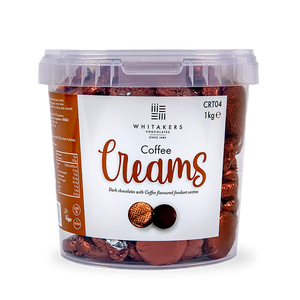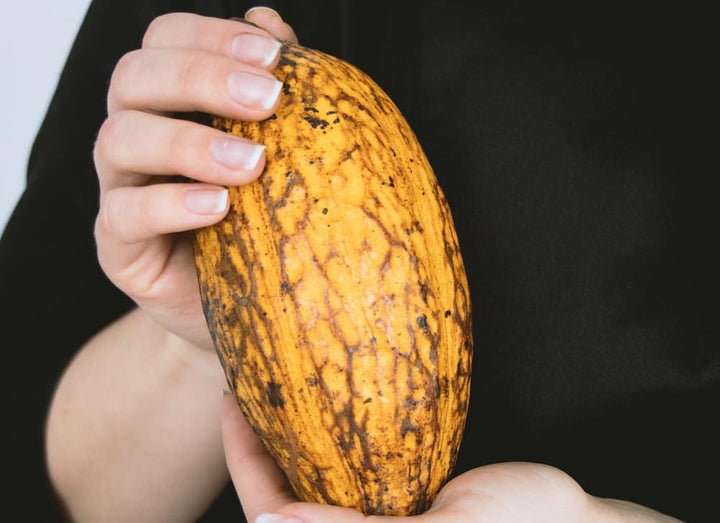Today, we're about to uncover another fascinating layer of the chocolate-making process that might surprise you.
Now, when we think of fermented foods, our minds often wander to beverages like wine and beer or perhaps even to foods like sauerkraut and yoghurt.
But have you ever thought of your favourite bar of chocolate falling under this category?
Believe it or not, the chocolate we know and love undergoes a critical stage of fermentation in its journey from cacao tree to chocolate bar.
Let's delve into the complex world of chocolate fermentation and unravel how this crucial process imparts the distinctive flavours we associate with our cherished treat.
Is Chocolate Fermented?
Yes, chocolate is fermented. The process begins shortly after the cacao pods are harvested.
The seeds and pulp from the cacao pod are left to ferment for a period of two to seven days.
This fermentation process is critical in developing the rich, complex flavours we associate with chocolate.
Related Post: What is Chocolate Conching?
How is Fermentation Used During the Manufacture of Chocolate?
Fermentation plays a crucial role in the manufacture of chocolate, acting as the first vital step in developing the distinctive flavours we associate with our favourite indulgence.
Once the cacao pods are harvested from Theobroma cacao trees, they are cracked open to reveal cacao beans encased in a sugary pulp.
It's this sweet pulp that initiates the fermentation process.
The pods and their beans are placed into large containers or heaps, where natural yeasts and bacteria present in the environment begin to consume the sugars within the pulp, producing alcohol as a by-product.
This alcohol then gets transformed into acetic acid by acetic acid bacteria.
The generation of heat from this fermentation process, alongside the acetic acid, triggers important chemical changes within the cacao beans themselves.
Specifically, it starts the breakdown of proteins into smaller compounds, such as amino acids, and carbohydrates into simpler sugars.
These smaller compounds will later react during the roasting stage to develop chocolate's unique flavour profile.
Moreover, fermentation is crucial in eliminating the initial bitter taste of the cacao beans, as well as reducing the purplish raw bean colour to brown, making them look more like the chocolate we recognise.
Typically, this fermentation process takes between two to eight days, after which the beans are dried in the sun.
This step is carefully controlled as the duration of fermentation impacts the final flavour of the chocolate - too short, and the chocolate may be acidic and raw-flavoured, too long, and it may become overly mellow and lose some characteristic chocolatey notes.
Therefore, skilled chocolate manufacturers monitor this process diligently to ensure the resulting chocolate hits the perfect note of deliciousness.
Related Post: What is Cocoa Mass?
What is Double Fermentation During the Process of Making Chocolate?
Double fermentation, a term coined in the world of chocolate making, is a specialised and rather experimental method of fermentation designed to enrich and diversify the flavour profiles of chocolate.
Similar to the regular fermentation process, where cacao beans are left to ferment naturally by yeasts and bacteria present in their sugary pulp, double fermentation introduces an additional step.
After the initial few days of standard fermentation, a second ingredient, typically a fruit such as banana, passionfruit, or citrus, is added to the fermenting cacao beans.
This second ingredient starts a new wave of fermentation.
The naturally occurring yeasts and bacteria on the added fruit consume the sugars in the fruit, triggering another round of fermentation.
This additional fermentation period infuses the cacao beans with flavour compounds from the fruit.
As a result, the finished chocolate carries subtle flavour notes from the second fermentation ingredient, creating a more complex, nuanced taste experience.
For example, if passion fruit was used in the second fermentation, the final chocolate might exhibit delicate tangy or tropical notes.
However, this process requires very careful monitoring and control.
Each stage of fermentation, the choice of additional fruit, and the timing must be meticulously managed to prevent off-flavours and ensure a high-quality product.
Despite the additional effort, double fermentation allows chocolatiers to create unique, innovative, and exotic flavours, taking the chocolate-tasting experience to a whole new level.
Related Post: What is Cocoa?
Does All Chocolate Come from Fermented Cacao Beans?
Yes, virtually all chocolate is made from fermented cacao beans.
The fermentation process is a crucial step in the transformation of cacao pods into the chocolate we know and love.
When the cacao pods are first harvested, the cacao beans are encased in a sweet, white pulp.
This pulp is rich in sugars, making it an ideal environment for fermentation to take place.
The beans and pulp are typically placed into shallow containers or sometimes simply left in piles to ferment naturally.
The fermentation process, which is driven by naturally occurring yeasts and bacteria, usually lasts between 2 and 7 days.
This crucial step initiates the development of the complex flavours that characterise chocolate. It also helps to break down the bitter-tasting substances present in the raw cacao beans.
After fermentation, the beans are dried and then roasted, and it's only after these steps that they truly start to taste like the chocolate we recognise.
Unfermented cacao beans have a very different flavour profile, often described as bitter and astringent, with none of the rich, nuanced flavours we associate with chocolate.
So, while there might be some very niche exceptions, it's safe to say that all the commercial chocolate you encounter comes from fermented cacao beans.
The art and science of fermentation are at the very heart of chocolate making.
Where Can You Buy the Best Quality Chocolate?
If you’re on the hunt for delicious and high-quality chocolate, look no further than Whitakers Chocolates.
With a rich heritage stretching back over 130 years, Whitakers is a name synonymous with excellence in chocolate-making in the UK.
What sets Whitakers apart is our secret family recipe, honed to perfection over generations, and our uncompromising commitment to using only the finest and most natural ingredients.
The result is a range of chocolates that not only taste exquisite but are also crafted with great care and attention to detail.
A significant aspect of Whitakers Chocolates is our ethical approach to production.
We fervently promote the use of Fairtrade Cocoa across our range, ensuring that our delicious chocolates also contribute to sustainable development and fair treatment of cocoa farmers.
Adding to our commendable practices, all Whitakers dark chocolate products have secured Vegan certification.
This means that everyone, regardless of dietary preferences or requirements, can savour their quality dark chocolates without compromise.
So, whether you’re a discerning chocolate lover, a keen follower of a vegan lifestyle, or simply someone who appreciates fine food produced ethically, Whitakers Chocolates is a brilliant choice.
Our legacy of quality and commitment to doing the right thing makes us a standout option for anyone looking to enjoy truly excellent dark chocolate.
Here are a couple of our favourite chocolate choices:
- Milk chocolate 90g bar infused with natural sea salt and smoky caramel flavour
- Dark chocolates with a creamy fondant centre flavoured with Irish Cream
- Smooth milk chocolate red foiled hearts
- Milk mint chocolate and honeycomb crisps
- Delicious white chocolate and Champagne chocolate truffles
Some Notes From an Expert Chocolatier On Chocolate Fermentation
As an expert chocolatier with years of experience in the industry, I can affirm that fermentation is one of the most critical stages in the chocolate-making process.
When you bite into a piece of chocolate, relishing its complex flavours, you're actually experiencing the end product of a long and carefully controlled process, which begins with fermentation.
Without fermentation, cacao beans would retain their original bitter and astringent flavours, making the final product unpalatable.
So, the next time you enjoy a piece of chocolate, remember that you are savouring the result of a process that’s as much an art as it is a science, and appreciate the marvellous transformation that cacao beans undergo to become the chocolate we all know and love.
Final Notes On if Chocolate is Fermented
Chocolate owes its rich tapestry of flavours to the crucial process of fermentation.
From the moment the cacao beans are removed from the pod, they embark on a journey of transformation, with fermentation being a cornerstone of this journey.
It's during this phase that the beans begin to lose their inherent bitterness, paving the way for the development of the distinct flavours we recognise and adore in chocolate.
The role of fermentation in chocolate making is not merely a functional step; it's a complex, nuanced, and, above all, essential process that significantly influences the quality of the final product.
In the grand scheme of chocolate making, it becomes clear that each step, from the growing of Theobroma cacao to the final stage of conching and tempering, has its role to play.
However, the fermentation of cacao beans holds a special place in this sequence, acting as the catalyst that kick-starts the process of turning a bitter bean into a sweet delight.






















